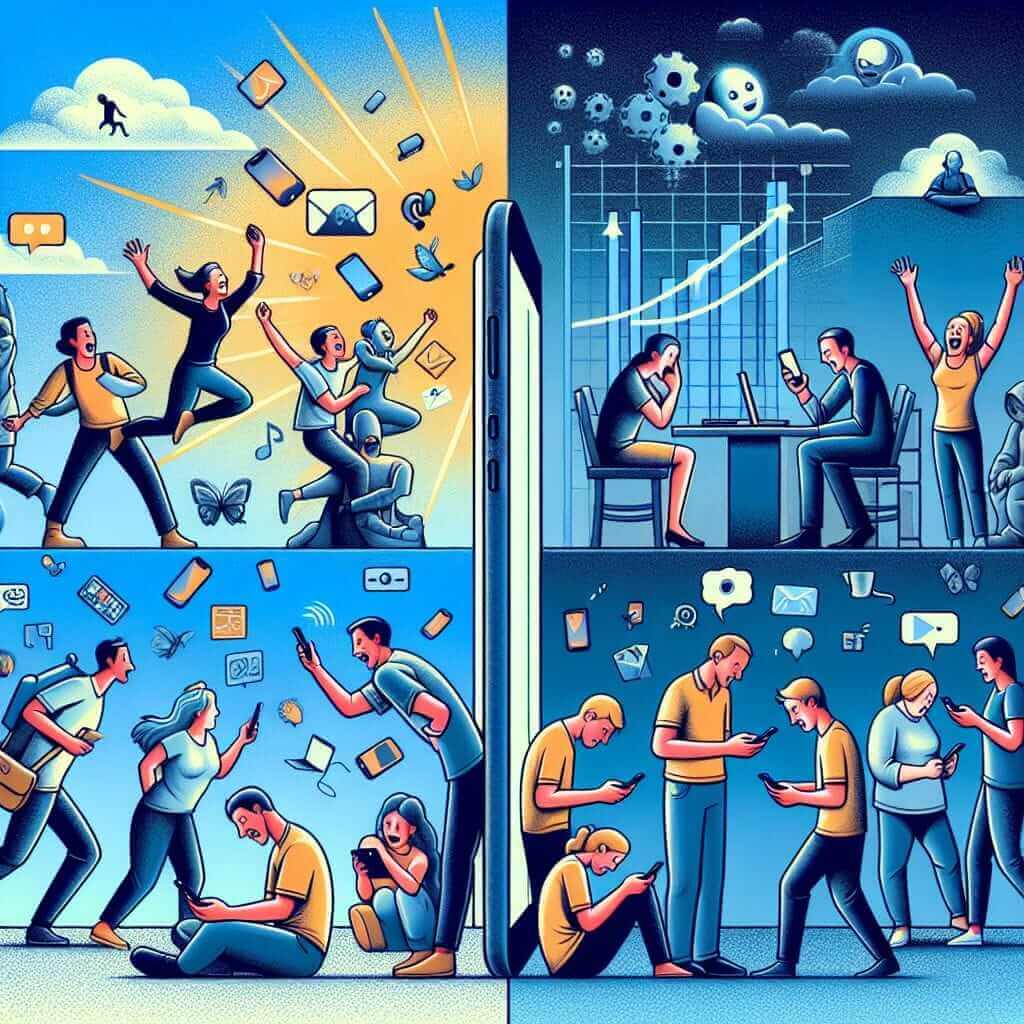The IELTS Reading section is a critical component of the IELTS exam, testing your ability to understand and analyze written material in English. One recurrent topic in recent years is the social impact of increasing smartphone usage. This topic not only holds significant relevance today but is also highly probable to reappear in future exam settings. This article will provide a comprehensive Reading practice set focused on this topic, complete with questions, answers, and explanations to help you prepare effectively for the IELTS test.
Reading Practice: The Social Impacts of Increasing Smartphone Usage
1. Reading Passage
Title: The Widespread Implications of Increasing Smartphone Usage
In recent years, the prevalence of smartphones has skyrocketed, profoundly impacting various aspects of societal behavior. On one hand, smartphones have revolutionized communication, allowing instantaneous connection across the globe. They facilitate relationships by enabling frequent and convenient interactions, particularly through social media platforms.
However, the incessant use of smartphones has sparked concerns pertaining to social health. Research indicates a correlation between heavy smartphone usage and mental health issues such as anxiety and depression. Young individuals, particularly teenagers, are notably susceptible to the adverse effects of smartphone dependency. This demographic often faces challenges such as cyberbullying, social isolation, and a decline in academic performance.
Moreover, smartphones have redefined work environments. The advent of remote working can largely be attributed to smartphone technology, which provides constant access to emails and work-related applications. While this may enhance productivity, it also blurs the boundaries between work and personal life, contributing to burnout and stress.
Societal norms surrounding time management have also evolved. Smartphones enable multitasking; however, this constant engagement can diminish the quality of task performance. People often find themselves distracted by notifications, which interrupts concentration and impedes productivity.
Lastly, the cultural landscape has been notably altered. From entertainment to news consumption, smartphones play a dominant role in shaping public opinion and trends. The algorithm-driven content often leads to the creation of echo chambers, where users are repeatedly exposed to similar viewpoints, thereby stifacing diversity of thought.
2. Questions
A. Multiple Choice
-
Which of the following is NOT mentioned as a negative impact of heavy smartphone usage?
A. Anxiety and Depression
B. Enhanced Productivity
C. Social Isolation
D. Academic Performance Decline -
How have smartphones redefined work environments?
A. By reducing communication
B. By eliminating remote working
C. By providing access to work-related applications
D. By improving work-life balance
B. Identifying Information (True/False/Not Given)
-
Research shows that teenagers are more prone to cyberbullying due to increased smartphone usage.
True / False / Not Given -
Smartphones have entirely positive impacts on time management and productivity.
True / False / Not Given
C. Sentence Completion
- The term ___ describes the reduction in productive quality due to distraction from notifications.
- Smartphones have shifted cultural landscapes by ____, leading to the creation of echo chambers.
D. Matching Information
-
Match the following impacts of smartphones to their respective descriptions:
- Social Media Interactions
- Remote Working
- Mental Health
- Cultural Influence
a. Increased susceptibility to anxiety and depression
b. Shaping public opinion and trends through algorithm-driven content
c. Enhancing frequent and convenient social interactions
d. Blurring boundaries between work and personal life
3. Answer Keys
A. Multiple Choice
- B (Enhanced Productivity is not mentioned as a negative impact)
- C (By providing access to work-related applications)
B. Identifying Information
- True (Teenagers are notably susceptible to adverse effects, including cyberbullying)
- False (Smartphones may lead to diminished productivity quality due to distraction)
C. Sentence Completion
- Multitasking
- Algorithm-driven content
D. Matching Information
-
- Social Media Interactions: c
- Remote Working: d
- Mental Health: a
- Cultural Influence: b
4. Common Mistakes to Avoid
- Overlooking Keywords: Pay close attention to keywords within the questions as they often align with specific sections of the passage.
- Assumptions: Do not assume information not stated or implied in the passage.
- Time Management: Allocate time wisely to read, understand the passage and complete the questions.
5. Vocabulary
- Prevalence (noun):ˈprevələns – the fact or condition of being widespread.
- Correlation (noun):ˌkɔːrəˈleɪʃən – a mutual relationship or connection between two variables.
- Susceptibility (noun): səˌsɛptəˈbɪlɪti – the state of being likely to be influenced or harmed by a particular thing.
- Algorithm (noun): ˈælɡəˌrɪðəm – a process or set of rules to be followed in calculations or problem-solving operations.
6. Grammar Points
- Complex Sentences: Combining two or more clauses to give additional information and context.
- Example: “While this may enhance productivity, it also blurs the boundaries between work and personal life, contributing to burnout and stress.”
- Passive Voice: Used to emphasize the action rather than the subject.
- Example: “Research indicates that teenagers are often faced with challenges such as cyberbullying.”
Advice for Achieving a High Reading Score
- Practice Regularly: Consistency is key; make reading practice a daily habit.
- Enhance Vocabulary: Expand your vocabulary to comprehend passages better.
- Time Management: Practice under timed conditions to improve speed and accuracy.
- Review Mistakes: Learn from your mistakes; review incorrect answers to understand the rationale.

By integrating these practices into your study routine, you’ll be well-prepared to tackle the Reading section of the IELTS exam. Happy studying!